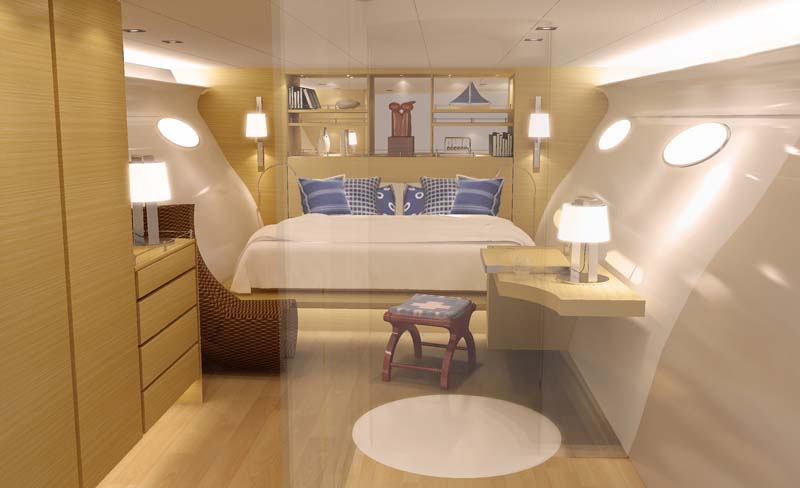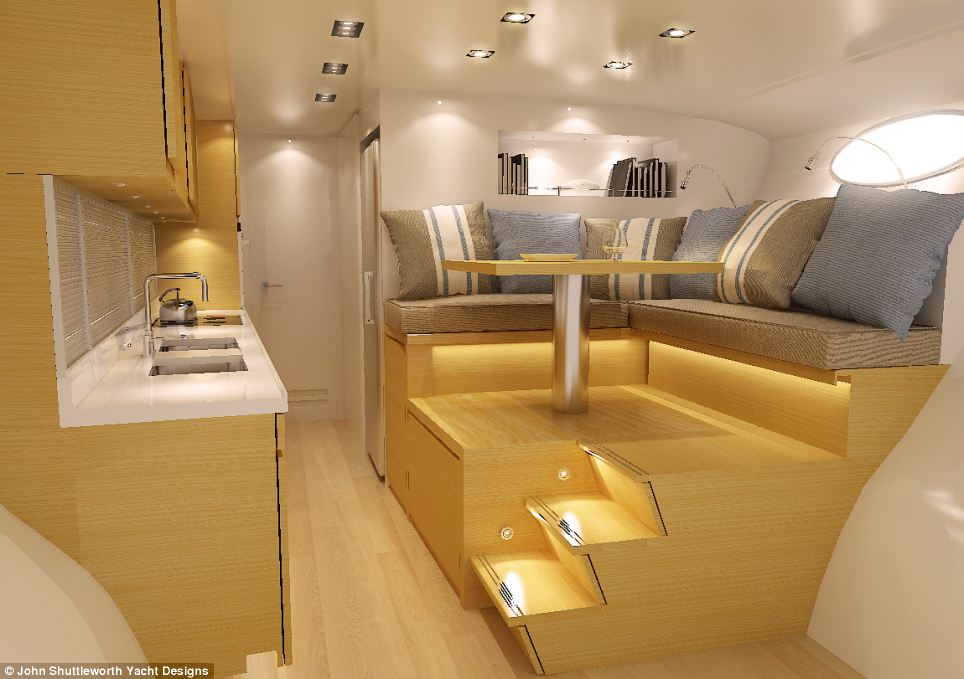11K on 75 hp is a delight , BUT it might require very light weight construction , which gets expensive.
I always figure about 3 lbs per sq fr of hull and deck is required in most boats 30-50 ft long.
Add it all up (seagoing windows 3/4 inch glass or so are HEAVY!) and it gets hard and expensive to stay light and long.
You are right - it is quite light construction - its an all-aluminum boat. The Morgan's Cloud website had a nautical engineer do an analysis of the Artnautica 58 hull - here are some quotes from that analysis:
"How light is light?
As drawn, weighing in at just 12 tonnes for a 17.8 m overall length, the Artnautica LRC58 is light indeed. Just how light is this thing? Let’s compare it to a few other real and hypothetical boats we might be familiar with. The table below lists the traditional displacement/length ratio, or DLR ( in long tons / (0.01*ft)3), and the modern dimensionless version (LDR, also called the slenderness ratio).
Vessel DLR = D/(0.01L)3 LDR = L/D3
Morgan’s Cloud ~ 312 ~ 4.51
Adventure 40 ~ 200 ~ 5.23
Doral 19 runabout ~ 170 ~ 5.52
Dashew FPB64 ~ 150 ~ 5.75
Artnautica LRC58 ~ 65 ~ 7.6
In other words, the LRC58 is – relative to its length – dramatically lighter than a Dashew motoryacht, and an absolute featherweight compared to a ballasted sailing yacht like the proposed Adventure 40. It’s even lighter, in relative terms, than my parents’ high-performance 19 foot runabout.
The structural engineering will be a real challenge here. This is a very light boat that will require careful attention to weight and structural details to achieve her mission.
....
He’s planning to carry 2300 L of water and we would undoubtedly want at least 1500 kg for food, cargo and personal gear. That works out to a payload fraction of roughly 25%, leaving somewhere between 5.5 and 7 tons for the structure, interior and all mechanical systems. I think this is achievable but it will require discipline (can’t have any unnecessary junk on board), skilful engineering, and reduced margins for error requiring very thorough QC during the build.
For comparison, a Boeing 737 has a fuel fraction of 27% and a payload fraction of 13%. Trawler yachts usually have a fuel fraction in the 12–15% range, with payload fractions also being in the low teens. A Dashew FPB 64′s fuel fraction is roughly 29%, but those boats are 2.3 times heavier and a bit faster, relative to their length and accommodation volume, than Harjamaa’s design; not surprisingly, they also carry (at 12,800 L of diesel) about 3.4 times as much fuel to get a similar range. Long-range motoryachts are not the same kind of animal as their short-hop coastal cousins; pushing the fuel capacity out to trans-oceanic levels means that we’re approaching an airliner’s sensitivity to weight and its distribution.
Source:
Artnautica 58—Design Analysis




 , but I will never have the money to buy a Dashew boat so it is a moot point. For the price of a FPB 64, I can buy new, two or three of the boats we want to buy. I can sink a couple of boats, not likely I hope, and still spend less money.
, but I will never have the money to buy a Dashew boat so it is a moot point. For the price of a FPB 64, I can buy new, two or three of the boats we want to buy. I can sink a couple of boats, not likely I hope, and still spend less money. 




